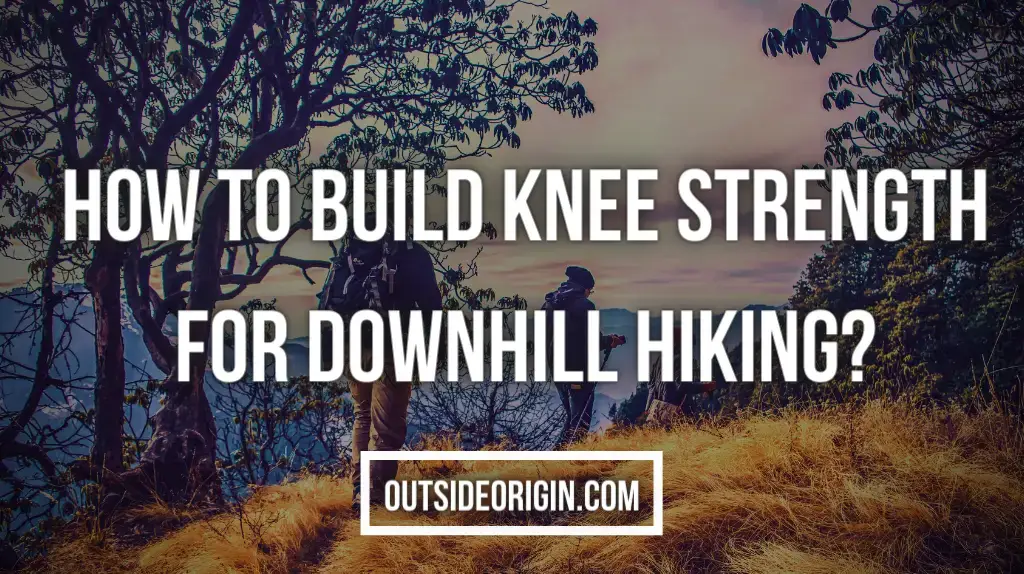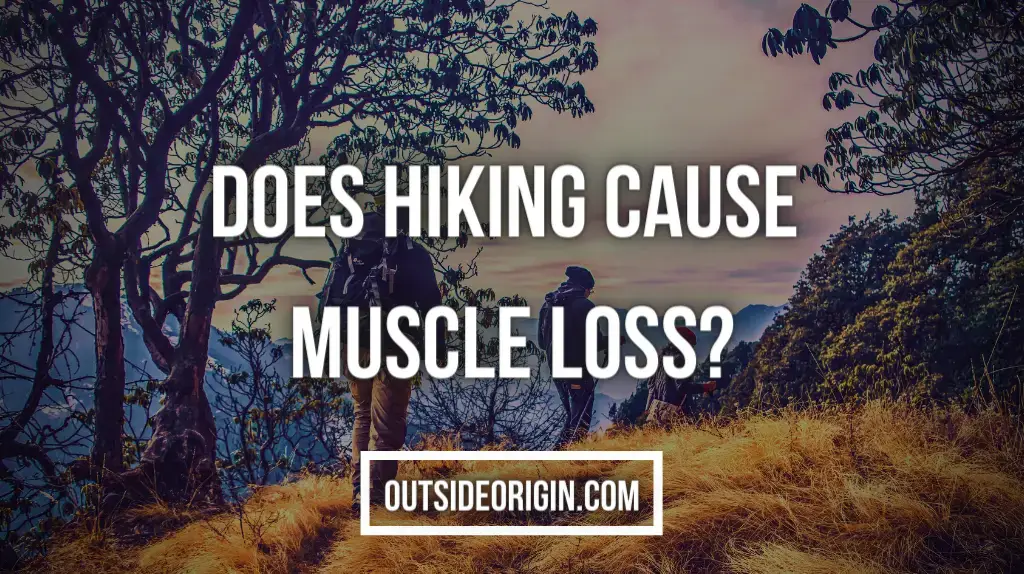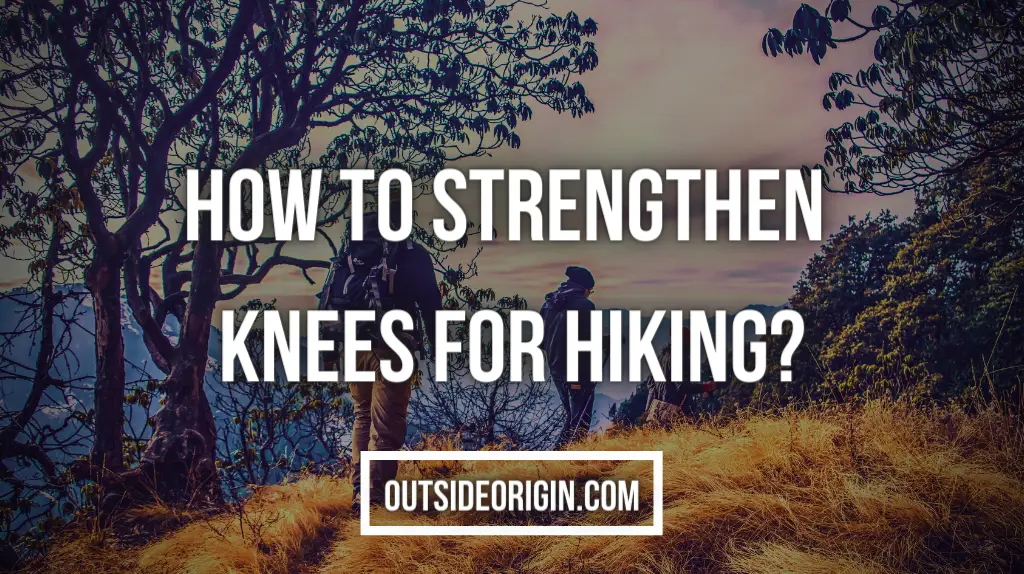If you’ve ever hiked downhill, you know it’s a real challenge. When it happens, the knees become a true matter of concern, the legs go from jello to bruises, and everything in between.
It’s important for hikers to be careful when it comes to practicing for their descents. Knee pain from downhill trekking can affect hikers of any fitness level, regardless of their ability. Practicing downhill hiking in order to avoid falling or injuring one’s knees and other lower body parts is essential. Walking down steep gradients is difficult, and there is no way around it. Training is all that is required!
Let’s take a moment to evaluate your knee conditions:
- Does knee discomfort run in your family?
- Have you ever undergone knee surgery?
- When hiking downhill, do you get knee pain?
- Are any additional lower-body joints or muscles hurting?
Visit a physical therapist or an orthopedist if you answered yes to any of the above questions and are experiencing discomfort or limited movement.
Carrying Weights As A Moderate Exercise

Carrying a light bag reduces the likelihood of musculoskeletal problems. Then gradually increase the amount of weight you carry. In the early stages of your training, it is not advisable to carry a hefty backpack.
A hiker should always attempt to travel as light as their skill set and environment allow them to in order to minimize the physical impact of steep and/or long downhill stretches.
You should gradually increase the weight you carry if you plan to hike for a long period of time. Additionally, you should think about bringing water up the hill and dumping as much of it as possible when you come down.
Always keep an eye on the amount of weight you’re carrying and gradually increase it over time as you don’t want to be hurt in the process.
Which Exercises Are The Best For Strengthening Knees While Hiking?
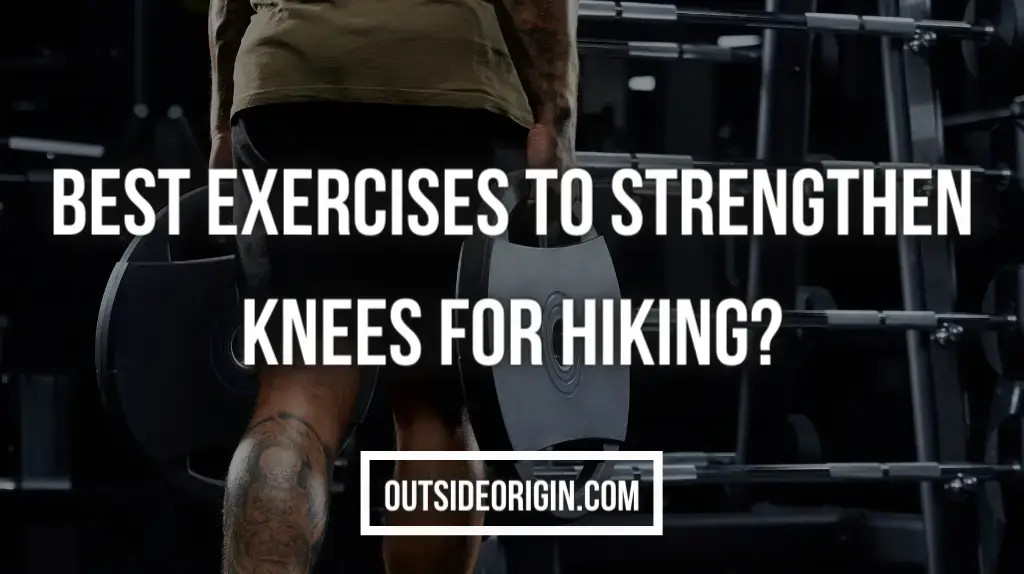
1. Stability & Balance Exercises
If you want to hike downhill without tripping, you need to practice your balance. For a brief moment after each stride, your entire body weight is transferred to a single leg. This involves the ability to withstand downward pressures as well as to maintain a stable position. The muscles around the ankle, hip, and knee joints must function together in various situations to prevent falls and slips.
2. Squats With Elevated Heels
Squats are excellent multi-joint workouts because they focus on the quadriceps. The glutes and hamstrings are also a focus. Increased quadriceps muscle fiber recruitment occurs as a result of increased knee range of motion during this exercise.
3. Lunges With Weight
In order to improve your ability to walk downhill, you should perform walking lunges, reverse lunges, kettlebell deadlifts, and single leg 14 squats. It’s important to undertake some lower-body workouts while slowly descending in order to prepare for downhill trekking. It’s important to descend your knee toward the floor with a minimum of 2-4 seconds of count if you’re doing walking lunges.
4. Calf Raises
Generally, our calves tend to take a battering on a long ascent. Your calf muscles are put under a lot of strain when you descend. You can improve your ability to hike downhill by performing a wide variety of calf exercises.
5, Single-Leg Squats
For a real mountaineering expedition, you need to establish a training regimen that will make you thinner, lighter, and more physically capable. The elevated single-leg squat is a terrific exercise to put in your routine. After months of practice, this can be added.
6. Step Downs
One of the best workouts for hikers and climbers alike. To perform this exercise, you begin by standing on a flat surface (e.g., a plate or step) and slowly lowering your heel to the ground. This roughly resembles the angular characteristics of downhill trekking.
7. Core Strengthening
A hiker’s performance and satisfaction on the path are directly related to their level of core strength. Today is the day you should be working on this. For optimal spine stability, efficient movement, and protection from lower back pain and stiffness, it is vital to have a strong core. To prepare for a day of trekking, it’s critical to practice exercises that target the lower back and core. Using a fit ball is an essential part of this routine.
8. Forearm Plank With Heel Lifts
All-around assistance is provided by these leg pulses that improve your glutes, core, and hamstrings.
- Set up your forearm plank with your abs tight and hips flat.
- Pulse your left foot up and down for 10 counts while keeping your ankle flexed.
- Lower the left foot, then go back to step 1 to complete the circuit with your right.
Knee Injuries: Preventative Measures
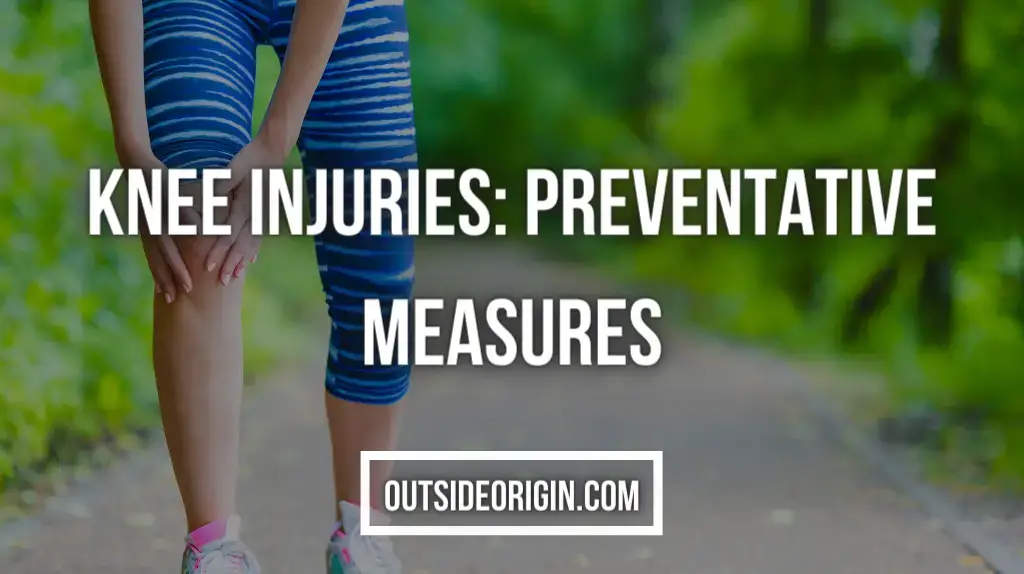
The best approach to avoid getting hurt when hiking is to do some preventative workouts, although they won’t guarantee your safety. Taking a few simple steps to lessen the strain on your joints will help you avoid a hike-ending injury.
Choose your footwear carefully: You’ll want to pay attention to your shoes: Keep an eye on the midsoles of your boots or shoes to ensure they’re not overstuffed. Make use of aftermarket insoles if your feet are overpronated.
Use trekking poles: With proper use, trekking poles can reduce the weight on your legs by up to 20 percent, and they can also provide additional stability on difficult terrain, minimizing the risk of injury-inducing falls.
Reduce your pack weight: When backpacking, the lighter your load is, the less strain you’ll place on your knees over time. If you don’t have a lot of expertise with camping gear, ask a buddy who has done it before to test it out for you.
While Descending, Keep Your Weight To A Minimum
When you’re hiking down a mountain, gravity is not your ally. Downhill hiking has a much greater impact on our bodies than other forms of exercise.
To begin, keep your downhill leg slightly bent when you hit the ground. The muscles, rather than the joints, will bear the brunt of the weight, reducing the strain on the knees. It’s a good idea to slow down, bend your body sideways, and reduce your weight down steep terrain in order to avoid tripping on the steps or the steep ground.
Take Caution When Descending Snow Slopes
The conditions of the snow and the slope’s gradient affect how you descend a glacier or snowy terrain. Mountaineering expeditions typically start out slowly and then descend quickly.
This is due to a variety of factors. The weather and the snow and glacier conditions are two separate things. We need to be able to descend quickly enough so that we don’t have to trudge through deep snow and risk being hurt or wasting time. Leg strength, suppleness, and efficiency are all necessary for rapid deceleration.
Mountaineering On Rocky & Screedy Peaks
Take your time, keep an eye on your speed, and be on the lookout for large rocks lurking beneath the sand. Descending is a big affair, and caution is required when doing so on a loose rock. Take tiny steps, one at a time.
Keep a safe distance from anyone below you in case you trip over a large boulder or lose your equilibrium. Instead of fighting the terrain, make your way through it.
Additional Strategies To Safeguard Your Knees While Downhill Hiking
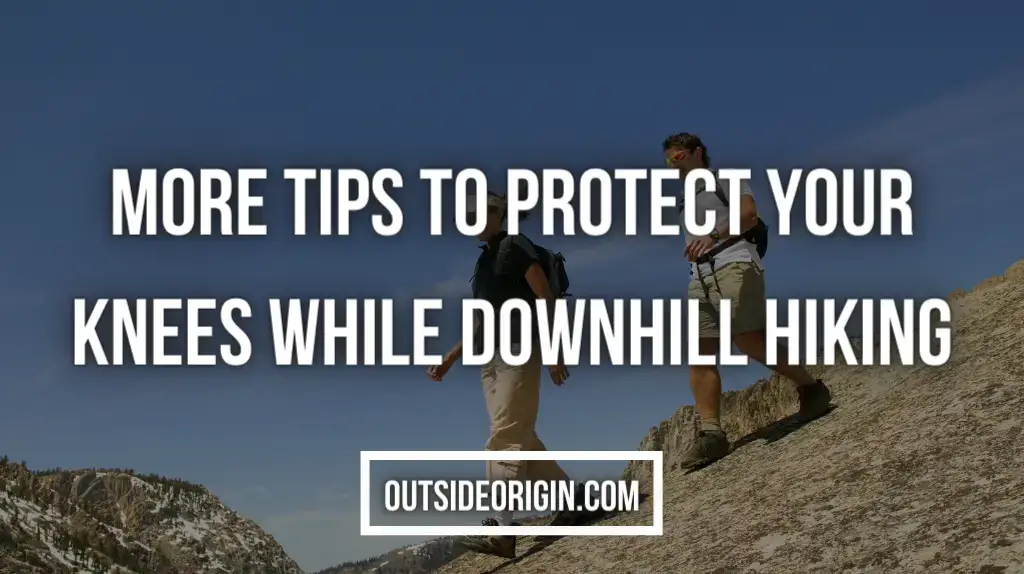
Below are a few more strategies you can implement to protect your knees while downhill hiking!
Maintain A Steady Pace
Your knees are under a lot of strain when you’re hiking down a steep slope. Research suggests that downhill hiking generates 7 to 8.5 times your body weight’s pressure.
It’s easy to see why so many hikers have knee problems after a long downhill hike, especially if they went too fast. When hiking downhill, it’s important to keep a steady pace and move slowly to reduce the strain on your body.
Avoid Slouching
Avoid leaning back, as this can throw your balance off and increase your risk of tripping and falling. Keep your torso above your hips and knees while hiking downhill, and you should be fine. Adding a forward lean to your posture may also help you stay more stable. You should keep your knees slightly bent at all times, regardless of the situation.
Switchback Technique
If you’re hiking on a rocky or steep slope, you should take a serpentine path by zigzagging your way across the surface. Using switchbacks to reduce the steepness of a trail is a common practice, whether you’re going up or down.
While it’s possible to get the same effect by angling right and left across the slope, there is no such trail. Regardless of how you choose to proceed, moving downhill on loose surfaces requires extreme caution to avoid a dangerous fall.
Utilize Trekking Poles
The effectiveness of trekking poles in reducing knee pain on downhill hikes is undeniable, even though they are resisted by many hikers. Trekking poles can help hikers avoid knee pain by absorbing some of the impact as they descend a mountain.
They also help to reduce the risk of falling and hyperextension of the knees by providing increased stability. You can shorten your trekking poles for uphill hikes and lengthen them for descents by adjusting the poles.
Conclusion: Final Thoughts
If you’re going on a downhill hike, you’ll want hiking boots that have excellent traction and are both comfortable and practical. If you already have knee problems, you may want to wear a knee brace.
Using a knee brace designed for everyday use can actually do more harm than good in a trail environment. As a result, a hiking-specific knee brace or sleeve is a wise investment.
Strengthening your quadriceps and glutes prior to your hike can also help alleviate any stress placed on your knees. Strengthening both your lower and upper body with lunges is an excellent way to prepare for long downhill and uphill hikes on difficult terrain.
Can You Do Me A Small Favor?
We have put a lot of time & effort into writing this post to provide you with the best info out there.
It’ll help us out if you could consider sharing it on your social media networks. You are also allowed to take any photo you want from our blog as long as you credit and link back!
Appreciate it! ❤️️
I am Jordan James, I am a writer and researcher over here at Outside Origin. I love spending time in nature and just being outside. I have hiked many trails such as the Appalachian Trail, Pennine Way, Half Dome to name a few.

